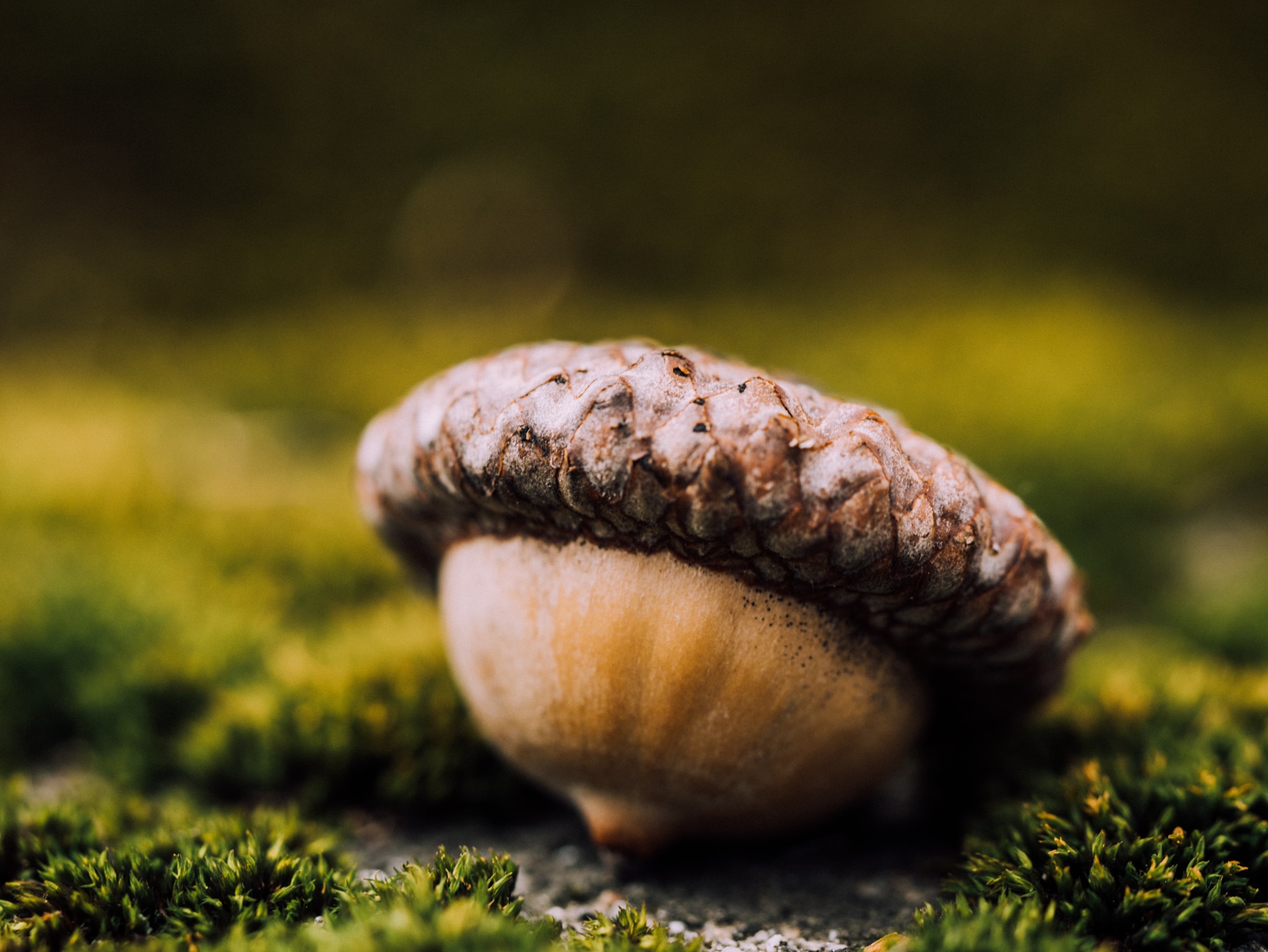As Acorns Fall
The huge oak tree towering over our house has a wonderful sense of humor. When she feels we are insufficiently grateful for her shade, she waves her many slender arms and showers her multiple-lobed leaves down on us. I hear her wheezy laughter soughing in the breeze as I strain to clear gutters and unclog downspouts, promising to be more grateful for shade in the future. Sometimes, when we fail to admire her soaring crown or how gracefully she dances in the wind, she throws twigs and an occasional dead branch on the lawn. I sit in her shade gritting my teeth, prying splinters from the jammed lawnmower blade.
But what makes me think that she knows who we are and where we live, and that she loves to tease us, is what she does with her acorns.
In summer she grows acorns specifically for the chipmunks and squirrels who inhabit her forks and crotches. Allows them to pick and store the acorns, watches as they crack and eat the green seeds, giggles majestically at the little pile of chewed husks that adorn our front doorstep. Her favorite chipmunk, whom she bribes with the juiciest acorns, has a nest just beneath our front doorjam, and spends hours—yes, hours—standing on his hind legs at the corner of the screen door as if on a raised stage, one hand on his chest, pretending to be a carbon monoxide monitor with a dead battery, chittering rhythmically, at a volume that would deafen a teenager with his woofers and tweeters blasting.
I think he’s a bachelor in search of a mate, but all he does is scare the ladies away. I fear he’ll be alone until he changes his tune. I’ve offered to teach him one of my proven love songs. He spurns all my offers. All I can do is wave him away, but he returns with infuriating regularity, to continue his monotonous, high-volume clicking.
When Fall comes, she goes into high gear. I think she plans for this all summer, just as some families obsess about decorating the lawn for Halloween. The moment the temperature dips a little at the start of September, Grande Dame Oak begins sending her acorns our way. First an occasional nut on the roof, which lands with an echoing thud that a golf ball might make if dropped from a helicopter. Or a kitchen sink being dropped from a second-floor window. She generally throws the first one in the early morning hours, when we’re not expecting the sound after almost a year of no acorns, and she’s watching through the open windows as I sit bolt upright in bed wondering what part of the roof has caved in.
After the first salvo, she drops her acorns all night. All day. Unceasingly. Mostly, on the lawn, where they burrow into earth awaiting the herd of wild turkeys who arrive like the mow and blow landscapers, do their work with sound and fury, and then take off. The difference is that the landscapers leave behind a mowed lawn. The turkeys, using three-toed claws tough enough to split rocks, churn our grass as if they were ploughing a cornfield.
While we watch them digging up each and every buried acorn, we listen to the music of airborne acorns being dropped on the roof. On parked cars. On the road, from whence they bounce and roll. No child with a drum set could have written a more diverse or brain-rattling composition. And it goes on for over a month. I won’t go into the details of what causes or prevents a heavy crop of acorns. It has to do with temperature, frosts, fungus, and moisture. But in a good year, a large oak can produce 10,000 acorns. That doesn’t surprise us. We’re at the receiving end of most of them.
Why don’t we cut the damn thing down? Because we need our trees. Because the Oak cools our home. Because we appreciate her beauty and the sound she makes in the breeze. Because we love to stand beneath her, savoring a glass of wine, and watch her changing face. Spring greens, summer fullness, and autumn golds and browns. Once the acorns are gone, leaves begin to fall, too, first slowly, then all at once.
She’s a pain at times, Grande Dame Oak, but we live our rapid little lives scurrying around the base of her massive, stable trunk. She may throw her acorns at us, but she‘s not really trying to annoy, or even to elicit a smile, from us. She does what she does for her own amusement, playing the Grande Dame Oak version of desk basketball.
Even as she changes with the seasons, her alterations are mostly predictable. She reminds us that we are as rooted in our world as she is in hers, and that in one life, our changes, too, are limited in scope. Perhaps not quite as predictable as hers, although from a far distance maybe we are as predictable as an oak tree.
After all, we can no more grow wings than an oak; no more grow roots than a chipmunk. She reminds us that we all have a place, and a season, and if we let her, she will still be throwing acorns at our descendants centuries from now.

